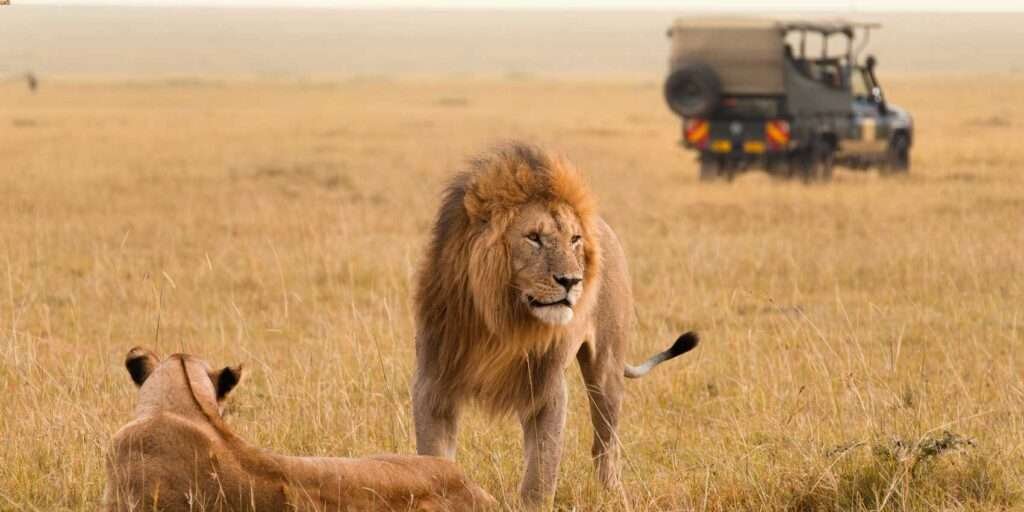Location and Size Serengeti National Park
Serengeti National Park, situated in northern Tanzania, is one of the world’s most renowned wildlife sanctuaries. Spanning approximately 14,750 square kilometers (5,700 square miles), this UNESCO World Heritage Site attracts tourists and researchers from around the globe. Not only is the park celebrated for its vast savannas, but it also boasts diverse ecosystems and rich biodiversity.
Wildlife in Serengeti National Park
Serengeti National Park presents an abundance of beauty that extends far beyond the renowned wildebeest migration. The park showcases a diverse array of landscapes and wildlife that is unparalleled in Africa. Its expansive plains are inhabited by over 4,000 lions, 1,000 leopards, 225 cheetahs, and 3,500 hyenas, a testament to the rich predator population supported by the plentiful presence of wildebeest, zebras, gazelles, and buffaloes. Additionally, the Serengeti ranks among the premier locations to observe the Big Five—rhino, buffalo, elephant, lion, and leopard. Almost all iconic African wildlife can be found within this magnificent park, including rare species such as the pangolin, East African Oryx, rhino, and wild dog.
The enchanting landscapes of Serengeti National Park encompass a range of environments, from savannahs dotted with acacia trees and expansive grasslands to majestic mountains, serene lakes, and wetlands. Each distinct area offers its own unique ambiance. Recognized as a UNESCO World Heritage Site, the park’s natural splendor and rich biodiversity leave a profound impact on visitors.
Are you interested in including Serengeti National Park in your travel plans? Explore our Tanzania safaris for inspiration or reach out to us for personalized guidance.
The Great Wildebeest Migration in Serengeti National Park
The annual wildebeest migration, featuring over a million wildebeest, is the main attraction of the Serengeti. It is an impressive sight as these mammals move across the plains, crossing rivers in search of water and fresh grass. The herds can be up to 40 kilometers long and travel about 1,000 kilometers. This journey is dangerous for the wildebeest, zebras, and gazelles as they must evade predators, especially at the Mara and Grumeti Rivers where crocodiles and strong currents lurk. The Great Migration is one of the Seven Natural Wonders of the World and is a highlight for many visitors. You can see the migration at any time of the year, but the timing depends on rainfall. To know more about the wildebeest migration, check our page about it.
Conservation Efforts
Serengeti National Park is a focal point for conservation efforts. These initiatives not only aim to protect endangered species but also combat poaching and maintain the park’s ecological balance. Furthermore, the Serengeti Research Institute plays a vital role in supporting these efforts through ongoing research and monitoring of the park’s ecosystems.
Tourism and Activities
Visitors to the Serengeti can enjoy a variety of activities. For example, they can embark on exhilarating game drives, experience hot air balloon safaris, or participate in guided walks. Additionally, the park offers a range of accommodations, from luxurious lodges to more budget-friendly campsites. All of these options promote sustainable tourism practices to preserve the park’s natural beauty.
Cultural Significance
The Maasai people, the traditional inhabitants of the Serengeti, add a rich cultural dimension to the park. Visitors, therefore, have the opportunity to learn about the Maasai way of life, including their traditions, customs, and close relationship with the land.
Conclusion
Serengeti National Park is not only a natural wonder but also a cultural treasure. Its stunning landscapes, abundant wildlife, and deep-rooted cultural significance make it a must-visit destination for anyone seeking an unforgettable African adventure.














